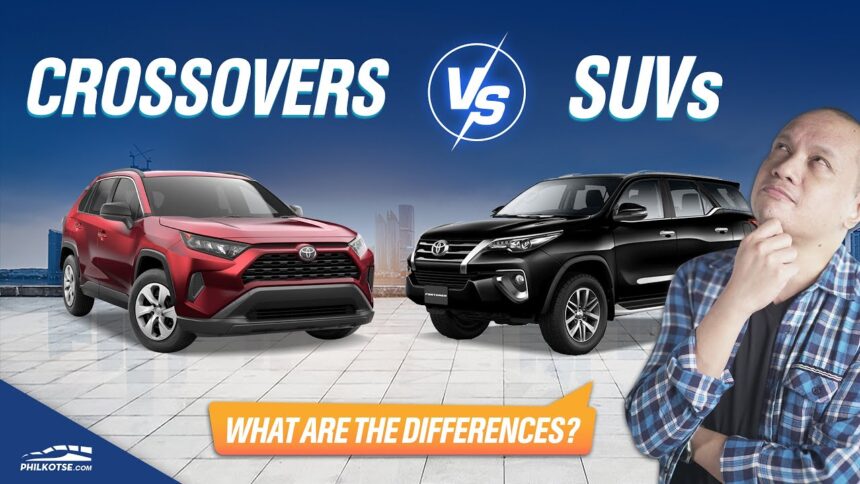What is SUV Full Form? Chances are you’ve heard the term “SUV” thrown around for years, whether hearing car commercials tout the latest models or seeing the vehicle variety increasingly dominating roads.
But do you actually know what the letters S-U-V stand for when it comes to defining this popular car category? Or how this classification differs from other automobiles like sedans and hatchbacks?
In this comprehensive guide, we’ll demystify the SUV acronym once and for all. You’ll learn what constitutes an SUV, its full form and meaning, different types available, evolution in the auto industry and most popular options across budgets. Let’s hit the road to SUV basics!
SUV Meaning: SUV Full Form
SUV stands for Sport Utility Vehicle – a rugged, truck-based vehicle optimized for off-roading flexibility & heavy cargo capacity mixed with family-friendly passenger space. The full form breaks down as:
Sport – Originally designed for sports requiring off-road handling like hunting, ski trips, camping etc.
Utility – Maximum cargo and open storage capacity for gear, equipment. Removable rear seats for hauling larger objects.
Vehicle – Enclosed body construction with 4-6 passenger capacity. More comfortable for everyday public roads vs a pick-up truck.
So in a nutshell – an SUV combines best elements of a hauling pickup truck, spacious minivan and durable off-roader into one practical package.
SUV or Crossover: Key Differences Made Simple
SUVs get confused with the newer category of crossover vehicles, but key differences set them apart:
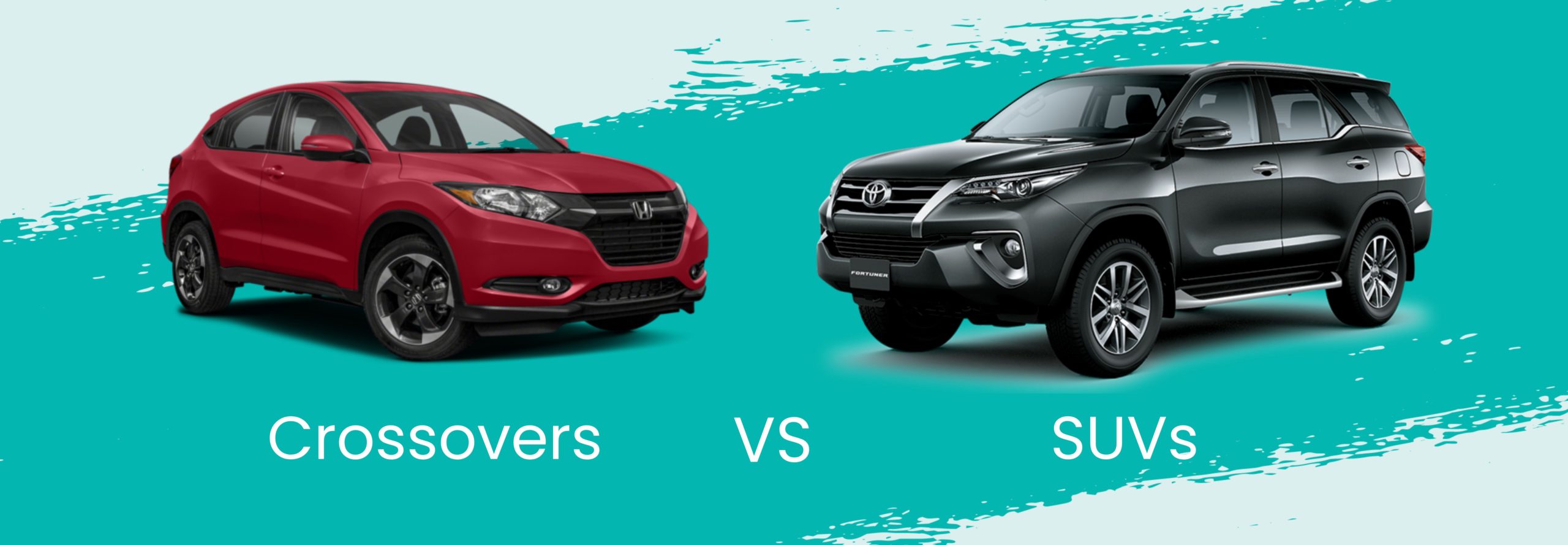
Origins – SUVs derive from commercial light trucks, using ladder frames and rear-wheel drive powertrains for hauling. Crossovers stem from car platforms prioritizing passenger comfort.
Capabilities – Traditional SUVs handle tougher off-road conditions with higher ground clearance, four-wheel drive and more torque. Crossovers focus less on trailblazing, more on road performance.
Drive – SUVs have rear-wheel (RWD) or four-wheel drive (4WD). Crossovers utilize lighter front-wheel (FWD) or all-wheel drive (AWD).
Fuel Economy – The rugged truck frames make SUVs guzzle more gas. Crossovers consume less using unibody frames and car engines.
Ride Quality – Truck-style SUVs ride stiffer whereas crossovers feel more smooth and cushy.
Appearance – Boxy, tall riding SUV profiles contrast to rounded crossover shapes.
So in essence – SUVs prioritize power while crossovers prioritize passenger comfort. But crossover marketing often (mis)uses the SUV designation given their growing popularity.
Zooming In: Types of SUVs Explained
While models blur lines, most SUVs fall into one of these common configurational categories:
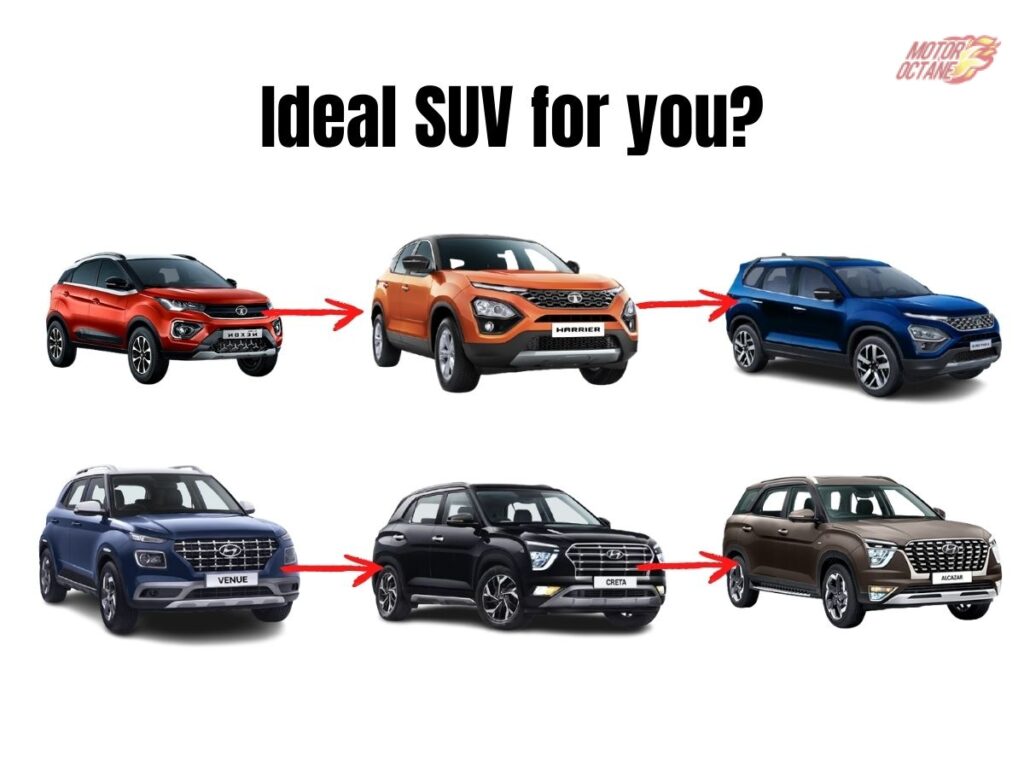
Compact SUVs
- Smaller, fuel-efficient size
- Seats 5 passengers
- Maneuverable for urban areas/parking
- Lower clearance than larger SUVs
- Examples: Honda CR-V, Toyota RAV4, Mazda CX-5
Midsize SUVs
- Balance of roomier interior with easy handling
- Optional 3rd row seating adding passenger capacity
- Moderate gas mileage ratings
- Example brands: Ford Explorer, Jeep Grand Cherokee, Nissan Pathfinder
Full-size SUVs
- Maximum interior room for passengers & cargo
- Higher clearance better for off-roading
- Towing capacity ideal for boats, small trailers
- Thirstier gas consumption
- Examples: Chevy Tahoe, Toyota Sequoia, Nissan Armada
Luxury SUVs
- Lavish features & styling plus high-end cabin materials
- Powerful engine performance, silky ride quality
- Latest high-tech gadgets and safety innovations
- Prestige badge appeal
- Examples: BMW X5, Land Rover Range Rover, Mercedes GLS-class, Cadillac Escalade
Gearing Up: The Evolution of SUVs Over Time
Hard as it may be to believe given their present day popularity, consumer SUVs only originated around 40 years ago intended solely for rugged practicality.
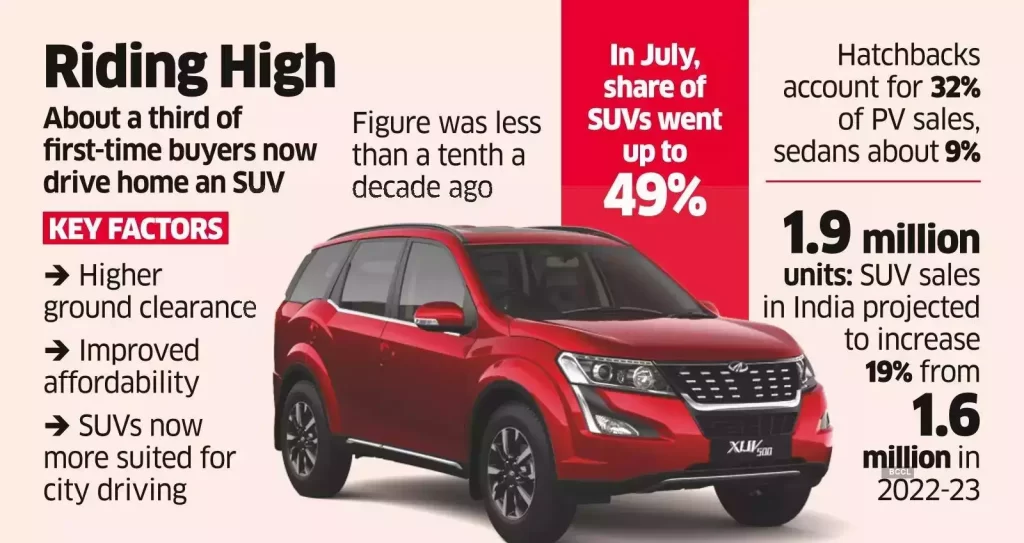
Let’s get into gear and trace the vehicle type’s fascinating origin story:
1960s – Jeep Wagoneer launches as the first modern SUV blending passenger car comfort with off-road durability. Market remains limited to rural owners needing extreme hauling/towing.
1970s – Shortages from 70’s gas crisis leads US automakers to temporarily abandon big gas guzzlers. Japanese brands like Toyota gain foothold, dominating emerging small truck market with 4WD models like the Land Cruiser.
1980s – American brands realize passenger trucks fills gap between utilitarian pickups and passenger cars. They counter Japanese brands successfully with Chevy Blazer, Ford Bronco II and compact Chrysler minivans.
1990s – SUV sales skyrocket in America replacing family sedans thanks to growing suburban families and women drivers valuing safety, flexibility in kids/cargo hauling and all-weather traction. Best-selling traditional truck-based options include the Ford Explorer and Chevy Tahoe.
2000s – Luxury car makers inject premium features into SUVs like navigation, DVD players and buttery leather interiors. BMW X5 brings sportscar performance to the segment. Safety innovations add stability control, side airbags and ABS brakes to combat rollover risks.
2010s – Eco consciousness swings pendulum from gas guzzling to fuel efficiency. Lighter crossovers utilizing car platforms gain favor while muscular SUVs decrease. Roomier mid-size models with optional 3rd row seating remain ideal for larger families.
2020s – Electrification wave results in almost every automaker debuting electric and hybrid SUV models. Self-driving features also emerge, promising to one day allow hands-free autonomous SUV transport.
Gear Up Your Search: Most Popular Affordable SUVs
With basic SUV knowledge equipped, let’s shift focus to top rated models across budget levels thatmake prime shortlists for savvy car shoppers. You’ll surely find one alignment with your family’s priorities whether that emphasizes roomy interiors, high-tech amenities, off-road grit, fuel efficiency or simply rock bottom pricing.
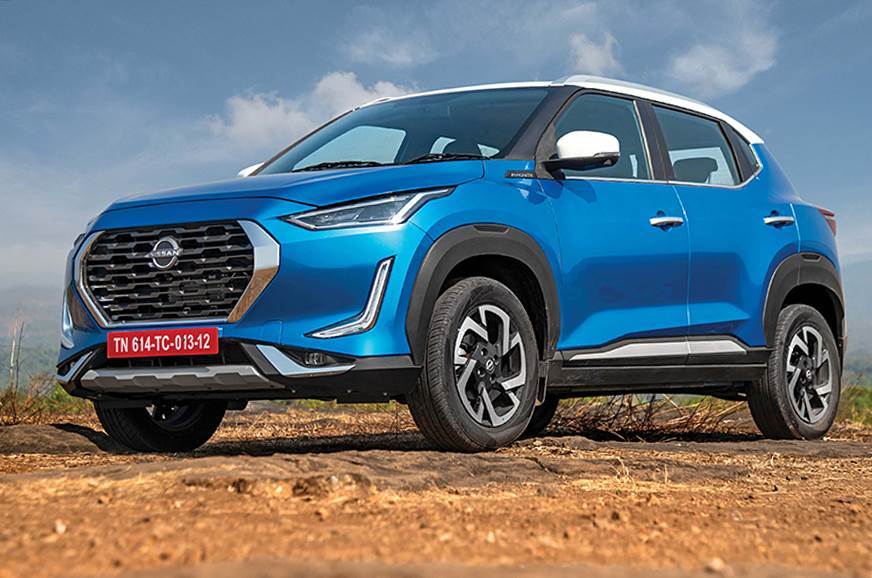
Overall Best Selling: Ford Explorer, Toyota Highlander, Honda CR-V, Nissan Rogue, Jeep Grand Cherokee
Most Affordable: Hyundai Tucson, Subaru Forester, Kia Sorento, Mazda CX-5, Chevrolet Traverse
Best Gas Mileage: Toyota RAV4 Hybrid, Kia Niro Hybrid, Hyundai Santa Fe Hybrid, Ford Escape Hybrid
Best Off-Road Capability: Jeep Wrangler, Land Rover Defender, Toyota 4Runner, Ford Bronco, Subaru Outback
Best Luxury Experience: Audi Q8, Volvo XC90, Genesis GV80, Acura MDX, Lexus RX350
As you finalize options, trimming down criteria like ideal seating capacity, cargo room and tech features helps match families to the best SUV aligned with priorities and budget. Test driving top contenders seals the decision making you an informed buyer.
Smooth Ride Ahead with SUV Smarts
While categories and models run wide, your SUV research journey need not feel overwhelming armed with this introductory overview.
You now hold the full meaning behind why SUVs deliver enduring utility and crossover appeal. Whether seeking off-road escapades or kid-friendly road trips, identifying the optimal drivetrain, cargo space and cabin comforts transforms new car confusion into savvy SUV selection confidence.
Now hit the roads in your shortlisted makes and models to see which set of wheels steers your family toward adventure, convenience and memories waiting up the road!

